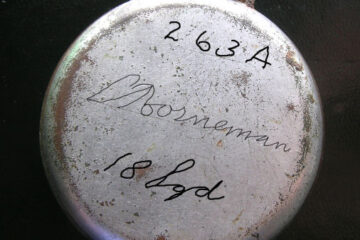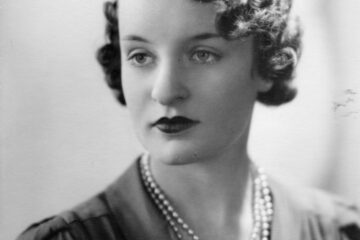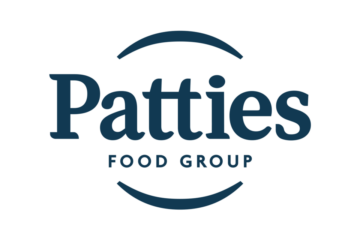Interview: Gold Coast July 2005Dirk Stellema, comes from Snake in Friesland, Born in 1917, Was in the airforce in the NEI in 1937, and was in Australia during the war from 1942, and came to Australia permanently in 1949 , and was in the 18th Squadron
Note: Somebody in the group saying Allies in a Bind was a good book and it was very accurate, and that the Brisbane Line extended across to Western Australia, and the whole northwest was to be given away undefended.
Sue: Tell me about what is important to you, your most vital memories of being in the 18th Squadron.
Dirk: Well, we started flying of course in 1938 on on airport in Bandung, West Java (sounds loke omniet). We flew Glen Martins, a twin engined aircraft, bomber and we already did searches mainly form Bollupkokin [sp?] and Talliko [sp?] right to the top of Borneo looking for Japanese. They had started already in ’38, ’39.
Sue: This is before you became part of the 18th Squadron?
Dirk: Oh, yes. Anyway, in 1941 we went to school at Andir, Bandung to become sergeants.
Sue: Who were teaching you? Allied or NEI Forces?
Dirk: The Dutch, yes. And then they got 20 new aircraft, transport aircraft. Instead of seats, there were ten rows of ten, 2 rows of 10 seats, and well they didn’t have people for that so they straight away stopped the school, and all became sergeants, and on the aircraft. The first flight I made on that was to Singapore already in connection with the bigshots, Dutch, the bigshots, ah British in Singapore. That didn’t last very long. We were short of pilots. I got an American pilot who had a Dutch name. They migrated from Holland in 1790s to America. Never been in Holland, didn’t speak Dutch. He left. I got an Australian pilot. I got off the aircraft in Batavia and we finished for the day but all of a sudden an emergency trip had to be made to Talambung [sp?]. [Can’t understand what he is saying, but seems to be that he picked up 18 passengers, Indonesians, and the air flight crew, and a mechanic and a Dutch Captain, second Lieutenant, all got killed [? Garbled]. But the next trip which I remember. I was called up all of a sudden to pick me up there, flew me to Bandung. And we made a trip with 6 Lockheeds, only 6 passengers in the aircraft, Bandung to Marlo [sp?] near East Surabuya and the next morning we flew to via Broome, Cloncurry to Brisbane. And we dropped all these 6 aircraft with 6 passengers, pilot, and mechanics and radio operators, to pick up new aircraft, B25s. They weren’t there. We went the next day back again from Brisbane to Marlow, Cloncurry and Broome again. When we arrived there in Marlo we couldn’t land because B17 flying fortresses came back looking for an aircraft carrier, Japanese, couldn’t find it. But the Japanese found the B17s that came from Marlow, near Surabaya. When we arrived there they were burning on the runway. So we had to go off for a while in the mountains, flying around, 20 minutes. But we were low in fuel coming from Broome. We landed in between the burning aircraft. Finished up got some fuel on board and went back to Bandung in West Java. And then further on we mainly flew between Surabaya and Borneo, and seek an airfield in the middle of Borneo, ferrying wounded and whatever. There just happened to be a cyclone too between Java and that time of year in February. We flew right through it. We had to. It was raining practically as hard in the cockpit as outside. We were on automatic pilot, and whoof, on its side, back again. We did that for three nights.
Sue: Did you think you were going to survive it?
Dirk: No, we were too busy hanging on. Well, I’ve had troubles before that you know. Emergency landings. One of the last flights I made, instead of going to Surabaya and straight back to Bandung. We hit the coast and there was a big fleet line; we did a couple of circles around it at 9000 feet, nothing happened, and we went back to Bandung, that’s where we had to go. Already the airport was shot to bits; we couldn’t land there. But we had a road made for that purpose. We landed there. Couple of big trees and the end of it. And we parked the aircraft there; camaflauged that and we were ready to disappear – to Australia. We had a pilot – no, the first time we wnet with the 6 aircraft, everybody had dengue fever. Well that was no good. It took me out of actions a couple of days. Fever, feeling terrible. But got back as quick as we could. We had a captain and a mechanic, we had an aircraft, but I in the meantime, we had different captains too. We had a captain and he didn’t turn up. Aircraft is ready and no pilot. But the mechanic knew where he lived, so we kicked in his door, that was at midnight, took him to the strip, which was really a road, everything was waiting; we hopped in; we had a few passengers; half empty plane, and we took off. And we were at 1000 feet, the pilot disappeared. He went to the back of the aircraft, he was that sick. The mechanic sat in and took over and after an hour he disappeared too. He was sick too. And I was alone there, two hours away from Java. And we had to go to Port Hedland. And later we saw Australia – and then the pilot, he became a KLM captain later in life [ sounds like Jaap Prenot] – and he turned up and said, where are we? No contact, radio contact because I am a radio operator. And with Port Hedland, or Broome, and Brisbane, it was no good. We needed directions. So we hit the coast. What are we going to do? Left or right? We went left and after 20 minutes, and after 20 minutes there was a Dutch flying boat lying on the beach. It was Broome; afterall, where they got knocked off. And we had a look around and we didn’t see anybody at that flying boat lying on the beach. So we thought, well, we had a look around, and it was a farm about a kilometre inland, with sheep station, and next to the sheep station was a small landing strip. And we said okay, we were going to land on the beach, but we landed on that strip. And it was the navy boys and women and children who missed Broome, missed being killed [in the Jap raid]. And we landed there and the next morning with the utility from the farmer, we went to the beach with a couple of rusty drums, to get a bit of petrol out of the flying boat, and then we had enough petrol to go to Port Hedland. With all the women and children, left them there.
Sue: What happened to the women and children, when they were left there?
Dirk: I don’t know. Oh, they finished up all in Sydney.
Sue: Was there anyone to receive them?
Dirk: Well, there was nobody there.
Sue: So they were left on the runway?
Dirk: There was no runway, just a little paddock.
Sue: I recognise that this is all you could do, but we’re trying to understanding what happened to the people when they arrived. The civilians.
Dirk: It was just a sheep station in the wilderness … and the owners of the sheep station looked after them …
Sue: Do you know their names?
Dirk: No. … it was about a hundred kilometres north [of Port Hedland] on the way to Broome. … That’s all we could do. So all we did, is we got petrol for the flight; we came back from Port Hedland, flew back to the station, got petrol for the flying boat, because it was undamaged. What I did with the petrol: the crew stayed and one of the crew members came with us the first time to Port Hedland, with the petrol back. We came back with all the women and children, and the crew stayed with the boat and finished up in Sydney. When we landed in Port Hedland, we lost them. I don’t know what happened there.
Sue: Who is ‘them’?
Dirk: Well they got in Port Hedland, well in the hands of a small town. Well it’s a big mining town now. And they finished up with other aircraft; often finished up in Perth, then Adelaide, and Melbourne.
Sue: Did you take any civilians to Perth.
Dirk: Yes.
Sue: What happened to them there?
Dirk: They were all transported with our aircraft to either Adelaide or Melbourne … with Dutch aircraft. Lockheed Lodestars. I’ve still got photos of it. And from there on I finished up in Brisbane again. Why I finished up in Brisbane – mostly I went to Canberra because the B25s hadn’t arrived yet from America in Brisbane. But we had a mob of KLM pilots to fly us through, who got stranded in the Indies, when the connection between the Indies and Holland was broken, when the Japanese came here. And well then I flew for a little while with these fellows in American transpsort between Brisbane and Port Moresby. And later on I finished up back in [fades out]. But after that stint in the Indies, just before the first time we went to Australia, was two or three aircraft we flew between Palembung [sp?] and Singapore. But the Japs were already in Singapore. Evactuating still. And mainly British and English back to Palembung. The military didn’t do much good. They got caught there. We went back to Batavia and went to Australia.
Sue: You are not a naturalised Australian?
Dirk: No, not for any particular reason.
Well, the contribution, one I brought a photo of that. I bought a few photos. This is a photo which has been very important [shows a group of men standing in front of a B25 with their names written on it taken in 1944; he is 3rd from the right with the name Stellema written on it.] This is the previous while before the War – Acorn Jan Van Ackhart [ well, that’s what it sounded like!!!] – he was the civilian adminstrator of Dutch New Guinea, and he was there too. You know, Hollandia at the top of New Guinea, that was occupied by the Japanese of course. At at that particular time there were 400 Japanese aircraft on that strip, and the Australians dropped there a bunch of fellows, Australians, to spy on Hollandia. Dropped them by flying boat. And we had to support them with food from Moroki, you know the bottom part of New Guinea. That was in the Dutch part, Moroki. And we supplied them with food. And it was a bad flight weather-wise. In the beginning of ’44, they were dropped there. And we fixed them with food and after that they got re-organised; they got an American aircraft carrier land-based troops, Americans and Australians, on a Sunday morning at 6’ o’clock, they went over there and destroyed most of them. And that shortened the war to a certain extent, Biak, Numphoor, the Dutch part of the Celebes and then of course Borneo became available, and they went very quickly to the Phillipines. So it’s been a master set. So that’s where I got this photos. That was an Australian airgunner.
Sue: Has the defence of Australia been recognised by the Australian government?
Sue: Has your contribution to the defence of Australia been recognised by the Australian government?
Dirk: I don’t really know.
Sue: Do you have a Gold Card?
Dirk: No, I was Dutch still.
Sue: You were not a naturalised Australian?
Dirk: No, not for any particular reason, because I got married here and I’ve got 6 kids born here. And well that’s one. Well that was an important thing.
Sue: Well quickly going through the other photographs. ..
Dirk: Well, that’s a crew member. Well what we did too, after that we went on a trip to America as passengers and flew an aircraft back ourselves. … That’s a photo of an aircraft in a museum in Holland; that’s an aircraft I flew during the war and that’s me. That could be 20 years ago. …. [copy of a photo of his captain that was good, and a photo of himself before he went to the Indies at age 20. ] … That was on a flight to Batavia and Bandung in 1944 to throw pamphlets over the camps … it was in all different languages, more or less to give the women hope that it is nearly finished. It didn’t work out that way because the Allies got caught back again in Belgium. Remember?
Sue: It meant a lot to the women.
Dirk: Probably. The pamphlets which were thrown out, I’ve given them to the co-pilot and they finished up in the museum in Sysabella [?]. I still got the copies at home. You can have the copies I have.
Sue: If I could get one in English and one in Dutch, that would be great.
Said he’d post them to me.
Well I’ve been through it from the very beginning, from ’38 and after the war I flew for KLM … as a Radio operator, not as a pilot. Some aircraft [during the war] I flew as co-pilot, but I’m not a pilot. … but during the war some of the captains would say, well you’re not a pilot but can you bring it back home. Even if it was without wheels I could do that.
See also:


